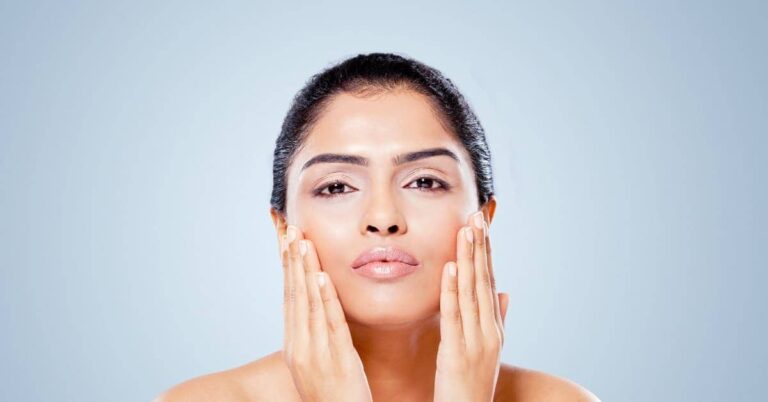Natural pH Balancing Ingredients & Why They Matter
You stumble home after a punishing commute, reach for your “oil-control” face-wash, and scrub away the city grime until your cheeks squeak. Five minutes later, the skin around your nose feels as tight as cling-film, and by morning fresh whiteheads have popped up along your jaw. What happened? Odds are your cleanser rocketed your skin’s pH from its comfy, mildly acidic zone (4.7 – 5.5) to the alkaline territory of dish soap. When that protective acid mantle dissolves, moisture escapes, acne bacteria thrive, and every product you layer on top suddenly stings.
The comforting news is that you don’t need a chemistry lab or an influencer-priced serum to fix the mess. Many of the humble ingredients lying on your kitchen shelf—including oats, yogurt, and rose water—carry natural acidity or buffering minerals that coax skin back to its happy range. In the next 10 minutes you’ll learn how to self-diagnose an off-balance pH, pick the right pantry hero for your skin type, test your progress with a ₹200 strip kit, and build a week-long routine that works whether you live in a Mumbai high-rise or a Lucknow hostel. Ready? Let’s decode the acid mantle and restore the glow that harsh soaps accidentally stole.

Quick Quiz: Is Your Skin pH Off?
Grab a pen and tick every statement that rings true for you this month:
- Post-wash tightness: Your face feels stretched for 15 minutes or more after cleansing.
- Sudden product sting: Lotions labelled “for sensitive skin” still tingle or burn.
- Oil–dry patchwork: Forehead shines but cheeks flake—sometimes on the same day.
- Slow-healing breakouts: Small pimples linger longer than a week or scar easily.
- Pilling moisturizer: Your usual cream balls up or looks chalky no matter how gently you rub.
Score card
• 0-1 “yes” – You’re likely balanced; maintain.
• 2-3 “yes” – Mild imbalance; tweak routine.
• 4-5 “yes” – Strong imbalance; start rescue plan today.
Skin pH Science, Simplified
Imagine preserving mango slices in a jar: add the perfect amount of vinegar and salt, and microbes stay away. Flood the jar with plain water, and mould takes over. Skin works the same. A thin, invisible cocktail of sebum, sweat, and natural moisturising factors coats the surface, creating the acid mantle. At a pH between 4.7 and 5.5, enzymes that glue dead cells together stay active, friendly bacteria flourish, and transepidermal water loss stays low.
The trouble starts when everyday habits push that number upward:
- Harsh soaps & sulphates – Traditional laundry-style bars can hit pH 9-10.
- Hard bore-well water – Calcium and magnesium ions bind to cleansers and leave alkaline residue.
- Over-exfoliation – Walnut scrubs or high-percentage chemical peels erode the mantle faster than it can rebuild.
- Hot showers & steam facials – Heat strips lipids, making it harder for skin to self-acidify.
- Stress & poor sleep – Cortisol spikes alter sebum composition, indirectly nudging pH higher.
Expert insight
“When the stratum corneum shifts even one pH unit upward, barrier enzymes mis-fire and micro-cracks appear,” notes Dr Anusha Rao, consultant dermatologist at St John’s, Bengaluru. “Restoring acidity is often step one before we add actives like retinoids.”
For Indian climates—with humidity swings, pollution, and water hardness that changes every district—supporting this mantle is crucial. Pantry acids such as acetic acid (apple-cider vinegar) or lactic acid (curd) offer gentle nudges without the sticker shock of imported serums. Plus, they’re biodegradable and almost impossible to over-apply when diluted correctly.
The Top 9 pH-Balancing Heroes
Below you’ll meet nine easily sourced ingredients, their science, DIY recipes, and who should (or shouldn’t) use them. Each can slot into a routine as a toner, mask, or mist. Introduce one at a time and patch-test on the inner forearm for 24 hours.

1. Apple-Cider Vinegar
- Why it works: Acetic acid (pH ~ 3) lowers alkalinity and has mild keratolytic action, dissolving flaky buildup.
- DIY: Mix 1 tsp ACV + 3 tbsp boiled-cooled water. Swipe with cotton across freshly cleansed skin, avoid eye area, rinse after 30 seconds.
- Good for: Oily to combination skin, sporadic breakouts, ingrown hairs under beards.
- Caution: Never use neat; may irritate eczema.
2. Greek Yogurt (Hung Curd)
- Why it works: Lactic acid (an AHA) softens bonds between dead cells; probiotics nurture friendly flora.
- DIY mask: Line a strainer with muslin, let curd drip 2 hours. Apply 1 tbsp on damp face, wait 10 minutes, rinse.
- Good for: Dullness, mild post-inflammatory hyperpigmentation.
- Caution: Skip if lactose-intolerant rash occurs; coconut yoghurt alt: blend 3 tbsp coconut cream with probiotic capsule contents.

3. Aloe Vera Gel
- Why it works: Naturally sits near pH 5, rich in polysaccharides and glycoproteins that calm redness and boost hydration.
- How to use: Cut a fresh leaf, scoop gel, blend 10 sec to break fibers. Smooth a thin layer post-cleansing as a serum.
- Good for: Sun-exposed or heat-rash-prone skin, humid coastal cities.
- Caution: Store-bought gels often contain dyes—choose colourless varieties.
4. Green Tea
- Why it works: Epigallocatechin gallate (EGCG) fights free radicals; cooled tea achieves mildly acidic pH 5-6.
- DIY toner: Steep 1 green-tea bag in ½ cup water for 4 min; cool, funnel into spray bottle, refrigerate three days max.
- Good for: Urban commuters needing antioxidant top-ups, mask-induced acne around chin.
- Caution: Used leaves can harbour bacteria; discard leftover brew after 72 hours.

5. Raw Honey
- Why it works: pH 3.5-4; contains gluconic acid plus antibacterial methylglyoxal (high in Manuka, but Indian wildflower honeys also help).
- Spot use: Dot over inflamed pimples, leave 20 minutes, rinse. Whole-face mask: mix ½ tsp honey with 1 tsp yogurt for slip.
- Good for: Dehydrated yet acne-prone skin, winter dry patches.
- Caution: Avoid if allergic to bee products; can feel sticky in high humidity.
6. Oatmeal (Colloidal or Finely Ground)
- Why it works: Beta-glucans create a moisture-binding film; avenanthramides reduce itch; natural saponins cleanse without high pH.
- DIY cleanser: Blitz oats to flour, mix 1 tbsp with warm water to a paste, massage 60 sec, rinse.
- Good for: Sensitive or barrier-damaged skin, psoriasis or eczema flare days, toddlers.
- Caution: Use fine mesh to prevent drain clog.

7. Rose Water
- Why it works: Steam-distilled rose hydrosol averages pH 5.5 and offers mild astringency; phenyl-ethanol soothes inflammation.
- Usage: Morning mist before sunscreen; mid-day refresher during office AC marathons.
- Good for: All skin types, especially fragrance lovers seeking alcohol-free toners.
- Caution: Beware synthetic “rose water” made from fragrance and tap water—check ingredient list.
8. Fuller’s Earth (Multani Mitti)
- Why it works: Alumino-silicate clay adsorbs excess sebum and gently buffers pH when mixed with acidic liquids.
- Mask recipe: 1 tbsp clay + 1 tbsp rose water + 3 drops raw honey. Spread thin, rinse at “almost dry” stage (~8 min).
- Good for: Oily T-zone, summer sweat congestion, men with coarse pores.
- Caution: Over-drying for very dry or mature skin; limit to once weekly.

9. Cucumber Juice
- Why it works: Slightly acidic (pH ~ 6), high in silica and potassium; adds evaporative cooling on contact.
- DIY mist: Blend ½ cucumber, strain, add 1 tsp aloe gel, refrigerate in spray bottle for 48 hours.
- Good for: Post-sun exposure, city heatwaves, late-night laptop fatigue.
- Caution: Spoils fast; toss when smell changes.
DIY Home pH Test: Step-by-Step What you need
- pH or universal litmus strips (range 4.0 – 8.0) – ₹150-250 online.
- Gentle, fragrance-free wipe or micellar water.
- Mirror and daylight.
Procedure
- Cleanse without actives: Wash with plain water or non-foaming cleanser. Pat dry.
- Stabilise: Wait 15 minutes. This allows skin to return to its baseline pH.
- Press strip: Fold the strip’s tip and press against the cheek or jaw for 3 seconds. Natural oils help wet it.
- Compare colours: Hold next to chart. Note the number.
- 4 – 5 = Balanced
- 6 = Slightly alkaline (may feel tight)
- 7 + = Compromised barrier
- 4 – 5 = Balanced
- Log readings: Use phone notes or download our printable tracker to monitor changes monthly.
- Rinse: Wash off any adhesive residue from the strip.
Accuracy tips
- If you live in a hard-water area (Indore, parts of Delhi NCR), do a final rinse with filtered or bottled water before testing.
- Avoid testing immediately after acids, retinoids, or foaming cleansers—results will be skewed.
- Test at the same time of day each month for consistency.

Weekly Routine Blueprint
Goal: Balance without overwhelm. Plug heroes into slots based on your lifestyle:
| Day | Morning (after cleansing) | Evening |
| Mon | Oatmeal cleanse → Rose-water mist → Sunscreen | ACV toner → Aloe gel light layer |
| Tue | Gentle gel wash → Green-tea spritz | Greek-yogurt mask (10 min) → Moisturiser |
| Wed | Water rinse only → Honey dab on dry spots | Barrier repair night: ceramide cream |
| Thu | Oatmeal cleanse → Aloe gel under SPF | Fuller’s Earth + rose water mask (8 min) |
| Fri | Rose-water splash → Sunscreen | ACV toner touch-up → Cucumber mist |
| Sat | Green-tea spritz → Lightweight moisturiser | Honey + yogurt combo mask |
| Sun | Sleep-in reset: cleanse late with oats → Aloe gel | Optional pH test + log → Early night cream |
Rules of thumb
- Keep actives (vitamin C, retinol) on separate nights from ACV to avoid over-exfoliation.
- Clay once weekly is enough; over-drying spikes oil rebound.
- Always patch-test a new hero on your forearm or behind ear for 24 hours.
Common pH-Sabotaging Mistakes
- Bar-soap addiction – “Medimix is natural!” you shout, but that ayurvedic brick sits at pH 9. Your acid mantle disagrees. Swap to a sulfate-free gel or oat wash.
- Double-foaming after traffic – Cleansing twice with harsh surfactants won’t erase PM2.5; it merely strips lipids. Instead, micellar wipe + mild cleanser.
- Baking-soda scrub hacks – Viral DIY recipes tout kitchen soda as exfoliant. At pH 9, it is the acid mantle’s worst enemy. Bin it.
- Hot showers till mirror fogs – Heat melts the intercellular “glue.” Keep water lukewarm and finish with a cool splash.
- Skipping sunscreen – UV rays inflame skin, raising pH indirectly. Protecting with SPF 30+ lets barrier enzymes work optimally.
Remember: if your skincare routine looks like a wrestling match, you’re probably breaking more than bacteria.
FAQs Indians Ask About Skin pH
Q 1. Does my city’s hard water really mess with pH?
Yes. Calcium & magnesium ions raise residue pH to > 7. Rinse with filtered water or finish with rose-water splash.
Q 2. Can spicy food affect skin acidity?
Indirectly. Capsaicin prompts flushing and sweat; sweat mixes with pollutants and can alkalise. Balancing diet with fruits, veggies, and plain water helps overall barrier health.
Q 3. Is lemon juice safe for quick brightening?
Straight lemon sits at pH 2 and contains photosensitising furocoumarins. Result: chemical burn + sun spots. If you must, dilute 1:10 and patch-test, but ACV or yogurt are far gentler.
Q 4. My skin gets oily by noon; isn’t that acidic enough?
Sebum alone doesn’t guarantee ideal pH. Over-cleansing oils away lipids, then glands overproduce sebum in panic—creating the illusion of excess oil yet pH imbalance.
Q 5. I suffer from cystic acne. Will these naturals cure it?
Natural acids support the barrier and can reduce surface bacteria, but deep nodules usually need prescription-strength actives like benzoyl peroxide or oral retinoids. Use these tips as supportive care and consult a dermatologist for persistent cysts.

Key Takeaways & Your Next Move
- Healthy skin loves mild acidity—pH 4.7 – 5.5.
- Everyday habits—alkaline soaps, hard water, over-scrubbing—quietly wreck that balance.
- Nine kitchen staples (ACV, yogurt, aloe, green tea, honey, oats, rose water, Fuller’s Earth, cucumber) provide affordable, gentle fixes.
- Patch-test, dilute, and introduce one hero at a time to avoid irritation.
- Track monthly with litmus strips; celebrate incremental wins.
Ready to get scientific about your glow?
Download our printable “pH Progress Tracker” and log your first reading tonight. Then come back in four weeks and brag about your barrier in the comments. Balanced skin isn’t a myth—you just learned the recipe.







